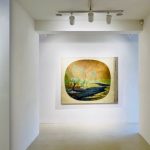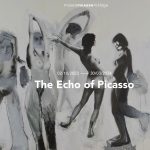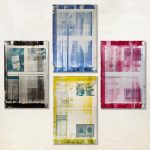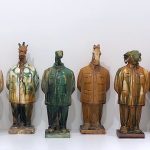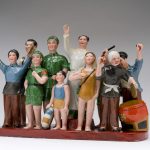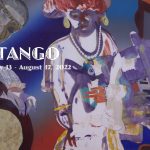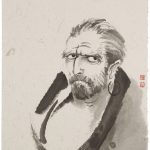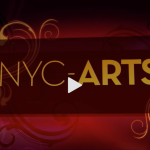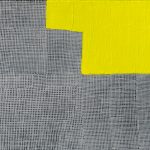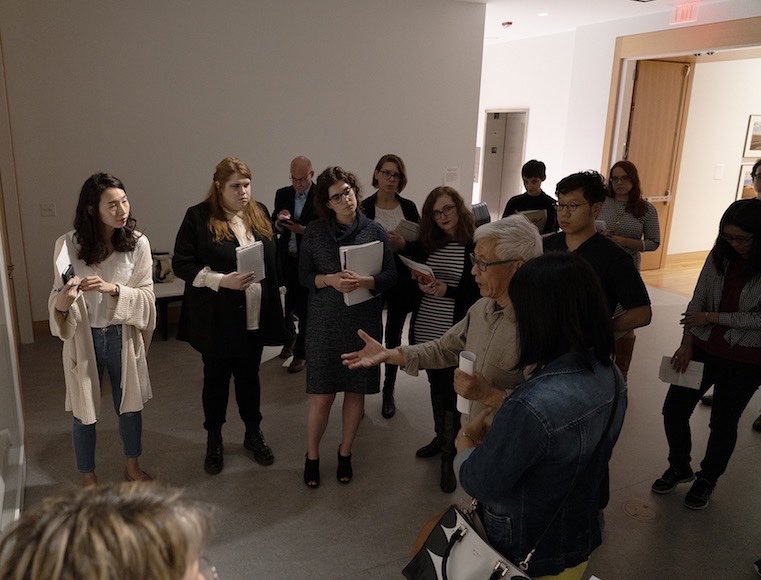
The Mariana Kistler Beach Museum of Art, Kansas State University
Zhang Hongtu talking about his works
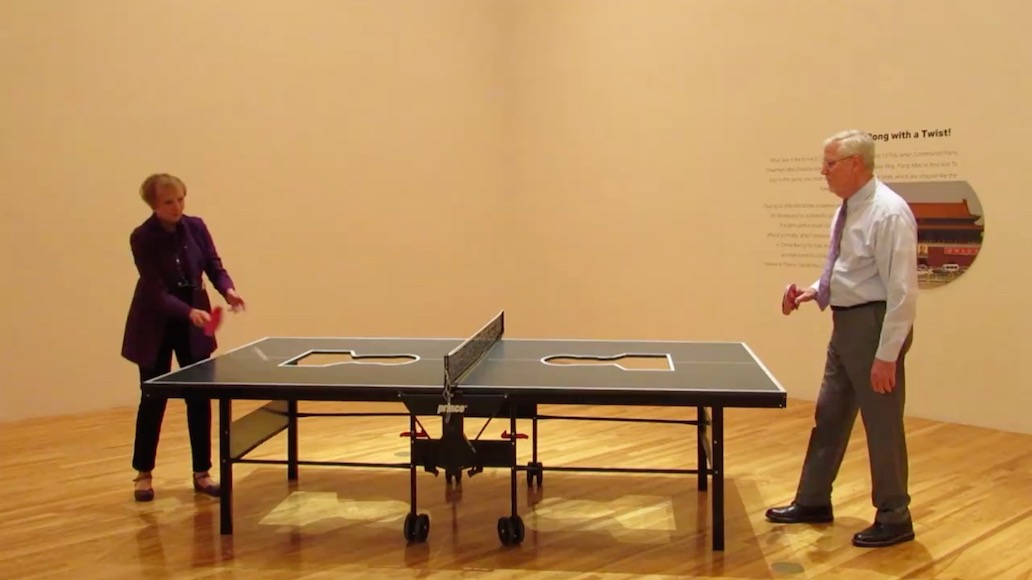
The Mariana Kistler Beach Museum of Art, Kansas State University
Kansas State University President Richard Myers and Mrs. Myers playing “Ping Pong Mao” by Zhang Hongtu during the exhibition
Courtesy of Kansas State University Marianna Kistler Beach Museum of Art
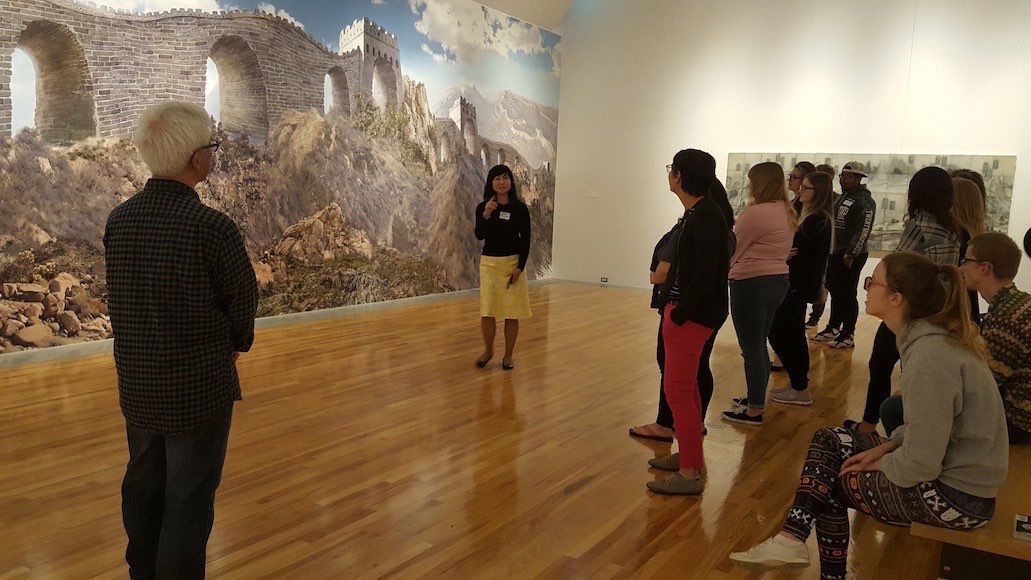
The Mariana Kistler Beach Museum of Art, Kansas State University
Great Wall with Gates III, installation view
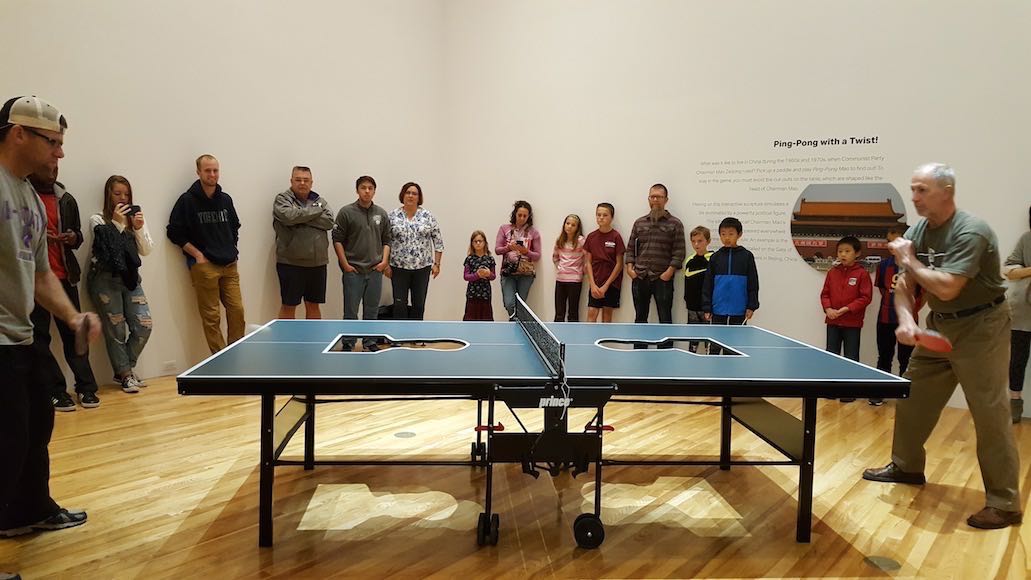
The Mariana Kistler Beach Museum of Art, Kansas State University
“Ping Pong Mao” by Zhang Hongtu in action
Courtesy of Kansas State University Marianna Kistler Beach Museum of Art
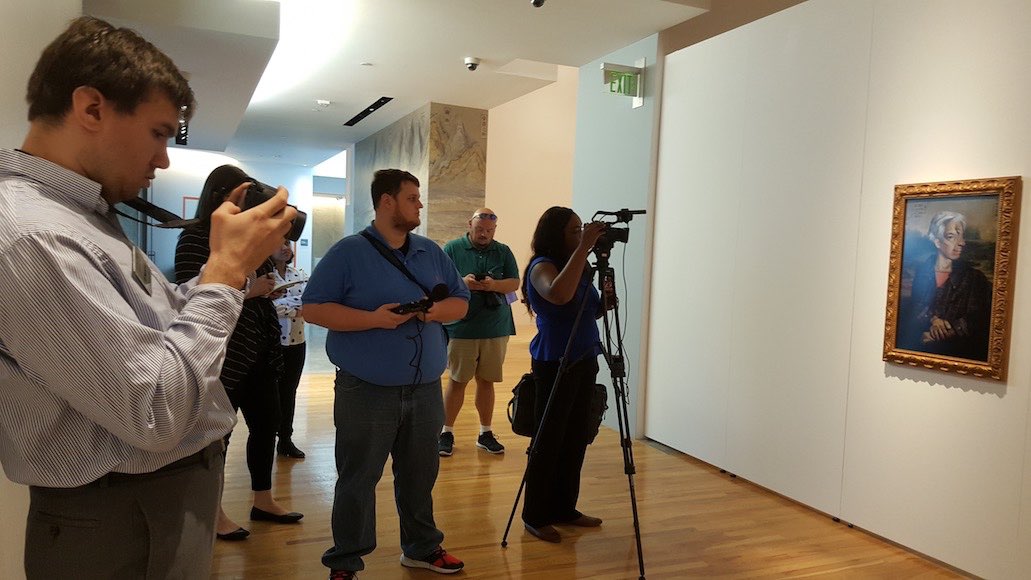
The Mariana Kistler Beach Museum of Art, Kansas State University
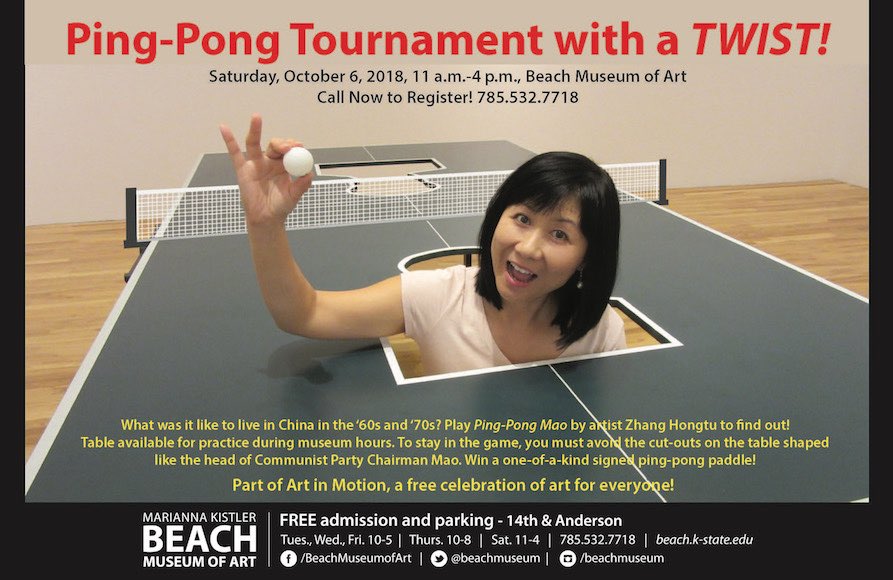
The Mariana Kistler Beach Museum of Art, Kansas State University
Invitation card
Courtesy of Kansas State University Marianna Kistler Beach Museum of Art
By Savanna Maude, THE TOPEKA CAPITAL-JOURNAL
September 22, 2018
Zhang Hongtu, an internationally acclaimed artist, will debut his first solo show in the Midwest on Tuesday at Kansas State University.
The exhibition, titled “Culture Mixmaster Zhang Hongtu,” will be installed in the Marianna Kistler Beach Museum of Art through Dec. 22.
The exhibition brings together early and recent works highlighting Hongtu’s expressions of his hybrid cultural roots.
Hongtu grew up in China as a member of its Muslim minority, suffering persecution for his religion and his political beliefs under the regime of People’s Republic of China founder and Communist Party chairman Mao Zedong.
Hongtu traveled around China as a young artist and was heavily influenced by his study trip to Dunhuang in the western province of Gansu.
Dunhuang was an important stop along the network of trade routes known as the Silk Road, which connected Europe and Africa to the Middle East and Asia. Through the Silk Road, Buddhism traveled from India to China, resulting in the establishment of Buddhist cave temples around Dunhuang between the fourth and 14th centuries. The cave temples featured painting styles different from what Hongtu learned in art school and showed signs of the mural artists’ awareness of European painting.
In 1982, Hongtu moved to New York City to study art.
His works show a lifelong interest in the cycle of travel, immigration, transmission of ideas and cultural cross-pollination.
Included in the exhibit are an oil painting applying the signature style of Vincent van Gogh to a landscape scene from a famous Chinese ink painting, and a Ping Pong table that requires players to avoid letting the ball fall through cutouts in the shape of the head of Chairman Mao.
Hongtu will speak at K-State at the Art in Motion festival on Oct. 6. He also will speak about Buddhist cave temples along the Silk Road on Oct. 9 at the Spencer Museum of Art on the University of Kansas campus.
The Beach Museum of Art is free to the public, and is open from 10 a.m. to 5p.m. Wednesday and Friday, 10 a.m. to 8 p.m. Thursday, and 11 a.m. to 4 p.m. Saturday.
SPOTLIGHT
Culture Mixmaster Zhang Hongtu
The Mariana Kistler Beach Museum of Art
Kansas State University
September 25 – December 22, 2018
Zhang Hongtu’s works were shown at his solo exhibition, Culture Mixmaster Zhang Hongtu, at The Marianna Kistler Beach Museum of Art, Kansas State University: September 25 – December 22, 2018.
Internationally acclaimed artist Zhang Hongtu has called many different places home and experienced life as an outsider at different times. Hegrew up in China as a member of the Muslim minority and because of his religious and political backgrounds, suffered persecution during the regime of Chinese Communist Party founder Mao Zedong. In 1982, he moved to New York City to study art and start a new life. This large exhibition, the first solo show of the artist in the Midwest, brings together early and up-to-the-minute recent works highlighting the artist’s endeavors in expressing his hybrid cultural roots.
Zhang’s travels around China as a young artist, most especially his study trip to Dunhuang in the western province of Gansu, proved seminal to his development. Dunhuang was an important stop along the network of trade routes known as the Silk Road, which connected Europe and Africa to the Middle East and Asia. Through the Silk Road, Buddhism traveled from India to China, resulting in the establishment of Buddhist cave temples around Dunhuang between the fourth and fourteenth centuries. The cave temples featured painting styles different from what Zhang had learned in art school and showed signs of the mural artists’ awareness of European painting.Works on display at “Culture Mixmaster” demonstrate Zhang’s lifelong interest in the cycle of travel, immigration, transmission of ideas, and cultural cross-pollination. Included are an oil painting applying the signature style of Vincent van Gogh to a landscape scene from a famous Chinese ink painting, and a ping-pong table that requires players to avoid letting the ball fall through cut-outs in the shape of the head of Chairman Mao.
Major support for this exhibition is provided by a grant from the Greater Manhattan Community Foundation’s Lincoln & Dorothy I. Deihl Community Grant Program, with additional sponsorship by Anderson Bed & Breakfast and Terry and Tara Cupps.
Related:
Categories: news
Tags: Zhang Hongtu
